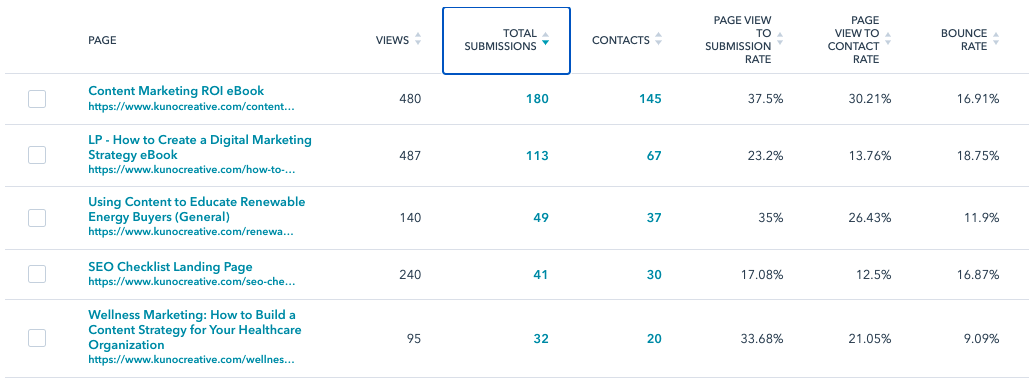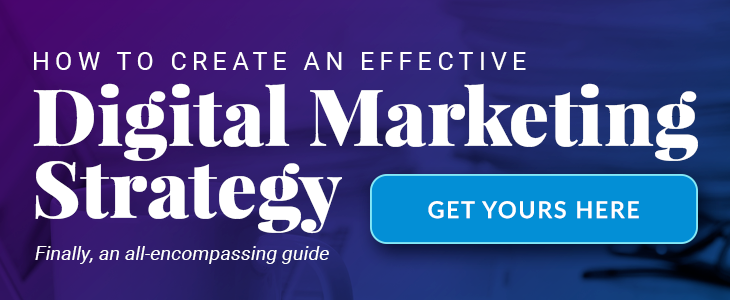
Why You Need A Content Audit To Start Your Year Off Right

If you’re like many people, you’re spending the first few weeks of the new year clearing out clutter, getting organized and setting goals. You can get a similar sense of satisfaction when you use this approach in your content marketing strategy.
A content audit can set the stage for strong performance in the upcoming year. If the idea sounds intimidating, it’s really no different from taking a personal inventory of how you spent your time personally and professionally in the past year:
Which of your efforts paid off the most? What did you find yourself spending a lot of time and energy doing that wasn’t worthwhile? What new things would you like to try?
Here’s a closer look at what a content audit is, why it’s worth your time, and how to conduct one.
What is a Digital Content Audit?
A digital content audit is a process for cataloging and evaluating all your online marketing assets to make sure you’re providing the right information for every stage of the buyer’s journey in the best possible format.
Your content could include many different types of resources:
- Blog posts
- Case studies
- E-books
- Infographics
- Interactive experiences, such as quizzes or assessments
- Reports from industry analysts
- Sales sheets
- Social content assets
- Webinars
- Whitepapers
- Videos
While it can be helpful to have a comprehensive list of everything you’ve ever created — especially if you’re starting in a new role or taking over marketing operations for another company or brand you’re less familiar with — it’s not always necessary.
Think about your goals for performing a content audit. You may just want a better understanding of how you’re promoting one specific service or catering to a certain audience or industry. Maybe you’ve been doing content marketing for years, and you want to take a closer look at which pieces brought in the most qualified leads from the past year. In that case, you can narrow your focus.
You also want to make sure your content is easy to find. One challenge we see our clients encounter after years of blogging is that newer, more relevant posts start to compete with other, older posts covering similar subject matter. The older posts had years to rank in search engine results and accumulate views, but they may not reflect your focus or your brand as well as something published more recently.
A content audit can help you identify keyword cannibalization or areas where you’re competing against yourself for the same search terms. Repurposing some of these older posts or redirecting them to something more relevant can help you avoid having several similar posts or pages effectively cancel each other out.
What are the Benefits of a Content Audit?
There are many benefits to performing a content audit, starting with the fact that you’ll become more organized just by taking the time to do it. Here are a few other reasons to consider auditing your content:
1. You’ll Identify Gaps
Your customers’ needs are constantly evolving; your products and services should be, too. Sometimes those changes happen faster than your marketing team can keep up. As you evaluate your goals for the year, you might realize you need to focus more on a certain type of buyer or a part of the buyer’s journey.
Maybe you think you’ve done a great job raising awareness about how you solve a particular problem, but the content you have on that topic isn’t leading to many conversions. Maybe your sales team is still fielding a lot of questions about the topic, indicating you need more educational content about it. Or maybe you’re losing a lot of deals to one specific competitor lately because they have a strong partnership with a bigger brand, but their solution costs twice as much as yours.
A digital content audit can help you uncover these gaps, making it easier to plan for the year ahead.
2. You’ll Find Opportunities To Repurpose Content
Remember that amazing brand video you did three years ago? I’m willing to bet no one else does, either. If it performed well and the information is still relevant, why not breathe new life into it with some updated footage and a few shorter clips to promote it on social media? You can do this just as easily with older webinars, interviews or blog posts.
In fact, updating and republishing older blog posts is one of the most effective strategies for many of our clients today. It’s often easier than starting from scratch, and it improves website traffic faster than waiting for a brand new blog post to rank.
3. Your Priorities Will Become More Clear
Once you’ve identified your gaps and you’ve identified your top performers with a digital content audit, it will be easier to determine where to focus your attention next. You can see what’s going to have the most immediate impact and what may be a longer-term goal. For instance, if you have an important service page that’s ranking No. 10 in Google’s search engine results, improving that page’s position to No. 5 can mean the difference between receiving 5% of all the organic traffic searching for that term and only receiving 1% of that traffic.
4. Your Best Pieces Will Perform Even Better
Whether your content marketing budget is $50,000 for the year or $500,000, you should focus on where you’ll get the best returns. If you have dozens of high-quality content pieces, it can be difficult to make that call. When you look at the numbers, it becomes much more obvious. Instead of creating five more mediocre pieces of new content, you might decide to put that budget toward promoting two or three of your greatest hits.
5. You’ll Eliminate Outdated Content
If you’ve been in marketing long enough, you’ll remember the days when you could write a 300-word paragraph about virtually anything, and you’d be ranking on the first page of Google simply because there was so little competition.
Ten years later, your random musings about office personality types are still driving thousands of people to your website every month, but they’re not looking for anything remotely related to what you do. You don’t want to lose that traffic, but you need a better way to relate it to what you have to offer today. You might also need to update your voice and tone in that piece so it’s more closely aligned with your brand today.
Whether you realize it or not, that hastily written post you published so long ago is the first impression many people have of your brand — so make sure it’s a good one!
How to Conduct a Content Audit
There’s really no right or wrong way to perform a content audit. If you’re using a content management system like HubSpot, yours could be as simple as creating a report that shows the top performing blog posts and landing pages of the past year. If you are more focused on SEO, you could use a tool like Semrush to see how your content is ranking for key terms and identify opportunities for improvement.
If you want to go more in depth and understand how your content contributes to your buyer’s journey and your entire brand ecosystem, you may need to build your own content audit template.
Conducting a content audit is a standard part of our process when we start working with a new client. It’s also something we update at least once a year.
Here are a few best practices we’ve developed over the years for conducting a content audit:
1. List All Your Content Assets In a Spreadsheet
If you want to make things easier, you could limit this to the content you’ve created in the past year or in the past few years. Here are the categories we typically include in a content inventory:
- Content title
- Type of content
- URL or location (if it’s a brochure or sales presentation that’s not live)
- Main keyword (and whether or not it’s ranking)
- Target persona or industry
- Funnel stage (awareness, consideration, decision, customer delight)
- Pillar page it supports
- Campaign it supports
- Page views
- Conversion rate
- How many new contacts and customers it brought in
If you’re looking for a content audit template, here’s a good example:

2. Review Content Performance
HubSpot’s dashboard and reporting software makes it easy to see your top performers for the year or for all time. You can sort all your blogs and landing pages by the number of views or submissions to see which ones were the most popular.

If you want to drill down deeper, you can also use attribution reports to see which content or campaigns contributed to the most leads, deals and even revenue.
3. Use the Semrush Content Audit Tool
You can also use Semrush to get additional insights about which content is ranking for specific keywords, which is driving the most search traffic, and where your rankings have increased or decreased the most over a period of time.
With the Semrush content audit tool, you can analyze all your website pages quickly. The tool will group your pages into four categories:
- Rewrite or remove: anything published more than two years ago and viewed less than 15 times in the last 30 days
- Need to update: content published more than six months ago and viewed less than 15 times in the last 30 days
- Quick review: content published less than six months ago and viewed more than 150 times in the last 30 days, indicating a quick win
- Poor content: pages with less than 200 words, which Google may penalize for thin content
Using this website content audit tool, you can also evaluate pages based on many other factors, including:
- Shares
- Backlinks
- Number of sessions (based on Google Analytics data)
- Bounce rate
- Search queries
After looking at this data, you might identify some quick wins to improve SEO by updating a page title, meta description, user experience or other elements of your pages that aren’t doing as well as you’d hoped.
It’s a great way to get a head start on your content audit and get recommendations right away.
4. Highlight Areas For Improvement
There’s always an opportunity to improve any piece of content, so you’ll need to narrow this down based on your own goals. If one of those goals is to help the sales team close more deals and your content shows you only have two decision-stage resources, that’s a good place to start. Maybe these pieces need to be updated or combined, or maybe you need to develop something entirely new.
5. Prioritize Next Steps
Finally, it’s time to put together a game plan based on your content audit. It’s important to be realistic about your time, resources and budget, so start with three to five things you know you can accomplish this quarter or this year and go from there. Determine who will be the subject matter expert for each if it’s not you, who else should be involved or give input, and what your timeline will be for updating or creating each piece.
Try to think beyond the content piece itself and put it into the context of the larger goal. If the goal is to help close more deals, you’ll need a lot more than just a well-written guide. How will prospects find this guide on your website? How do you plan to distribute it to people who have indicated interest already?
In addition to writing the guide, your next steps might include:
- Updating a nurturing email workflow to include the guide
- Starting a retargeting campaign to show the guide to people who visit certain pages on your website
- Running display ads with a specific publication or on a specific site
- Creating a short video to show how easy it is to implement the solution
- Developing or updating a case study to share with prospects
- Working with your sales team to develop a list of frequently asked questions
As you create new resources, don’t forget to add them to your content audit spreadsheet so the process will be easier the next time around.
A Content Audit is a Team Effort
Taking the time to catalog your content and evaluate its performance is an important step to developing a strong digital marketing strategy. Fortunately, you don’t have to do it alone. Your sales, customer service and product marketing teams can bring valuable insights that might not be obvious from just looking at the data. They can tell you what questions they find themselves answering over and over, what resources they share most often and what they wish they had to provide to prospects to make their jobs easier.
Once you have a better idea of what you need after performing a content audit, your work is only half done. It can be time-consuming to update older content pieces or develop new ones, and your team may not have the resources to do that.
An inbound marketing agency like ours can help you objectively audit your content and take the lead on writing, designing and developing a plan to promote your next content pieces so your team can stay focused on qualifying leads and closing deals.
To learn more about how we can help, schedule a consultation today.




